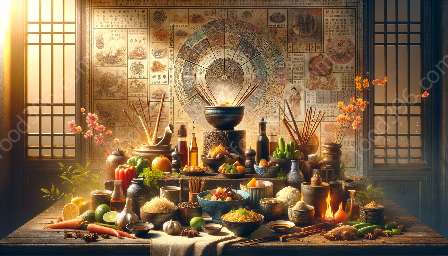Asian fusion cuisine is a melting pot of culinary techniques, blending traditions from across Asia with modern cooking methods to create unique and exciting dishes. This fusion of flavors and cooking styles has roots in the rich history of Asian cuisine as well as broader global culinary traditions.
Asian Fusion Cuisine History
Asian fusion cuisine emerged in the 1970s and 1980s when chefs began incorporating Asian ingredients and cooking techniques into Western dishes, creating a new and innovative culinary movement. The history of Asian fusion cuisine is a story of experimentation, creativity, and cultural exchange, as chefs seek to combine the best of both worlds to produce remarkable dining experiences.
Cuisine History
The history of world cuisine is a tale of diverse cultural influences, trade routes, and regional specialties that have shaped the way we eat today. Each region's culinary techniques reflect its unique landscape, climate, history, and cultural traditions, resulting in a rich tapestry of flavors and cooking styles.
Exploring Culinary Techniques in Asian Fusion Cuisine
Asian fusion cuisine encompasses a wide range of culinary techniques that draw from various Asian traditions and modern cooking methods. From stir-frying to steaming, these techniques contribute to the unique and vibrant flavors that define Asian fusion cuisine.
Stir-Frying
Stir-frying is a classic culinary technique widely used in Asian fusion cuisine. It involves quickly cooking ingredients in a small amount of oil at high heat, resulting in tender-crisp vegetables and perfectly seared meats. The rapid cooking process preserves the textures and colors of the ingredients while infusing them with the flavors of sauces and seasonings.
Steaming
Steaming is another essential technique in Asian fusion cuisine, especially in dishes like dim sum and dumplings. This gentle cooking method retains the natural flavors and nutrients of the ingredients, resulting in delicate and moist dishes that showcase the purity of the flavors.
Braising
Braising is a cooking technique often used in Asian fusion cuisine to create tender, flavorful dishes. The slow, moist cooking process allows the ingredients to absorb the rich and complex flavors of the braising liquid, resulting in melt-in-your-mouth meats and aromatic, savory sauces.
Grilling
Grilling is a versatile cooking technique that is widely used in Asian fusion cuisine to impart smoky flavors and charred textures to meats, seafood, and vegetables. The use of marinades, glazes, and spices further enhances the depth and complexity of the dishes.
Fermentation
Fermentation is a unique culinary technique that plays a significant role in Asian fusion cuisine. Ingredients such as soy sauce, miso, and kimchi are fermented to develop deep, umami-rich flavors and complex aromas that add depth to a wide variety of dishes.
Ingredients in Asian Fusion Cuisine
Asian fusion cuisine relies on a diverse array of ingredients to create its distinct flavors. From traditional Asian staples to modern twists, these ingredients contribute to the unique and dynamic nature of the cuisine.
Spices and Aromatics
Asian fusion cuisine often incorporates a wide range of spices and aromatics such as ginger, garlic, lemongrass, and chilies to create complex and vibrant flavors. These ingredients add depth and heat to dishes, enhancing their overall character.
Seafood and Fish
Seafood and fish play a crucial role in Asian fusion cuisine, providing a plethora of delicate and robust flavors. From fresh sashimi to tangy ceviche, the bounty of the sea is celebrated in a variety of inventive and bold dishes.
Noodles and Rice
Noodles and rice are fundamental elements of Asian fusion cuisine, serving as the base for many dishes. Whether in a comforting bowl of ramen or a fragrant plate of fried rice, these staples contribute to the heartiness and depth of flavors.
Condiments and Sauces
Condiments and sauces are indispensable in Asian fusion cuisine, adding layers of flavor and complexity to dishes. From sweet and tangy teriyaki to spicy sriracha, these condiments and sauces complement and elevate the culinary experience.
Conclusion
Asian fusion cuisine is a vibrant and dynamic culinary tradition that draws from a rich history of Asian culinary techniques and broader global cuisine influences. By blending traditional and modern cooking methods, incorporating a diverse range of ingredients, and experimenting with bold flavors, Asian fusion cuisine continues to captivate diners and inspire chefs around the world.

